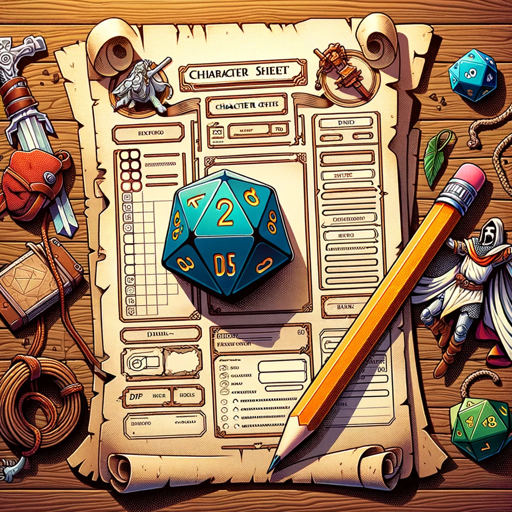PCB-PCB design and manufacturing tool
AI-powered PCB design and manufacturing
Can you help me with a PCB layout?
What are good practices for PCB design?
I need advice on thermal management in PCBs.
Can you recommend a production company?
Related Tools
Load MoreCircuit Sage
AI Expert on Electronics and Embedded Systems.

Electronics Hardware Design GPT
Expert in electronics and hardware design, circuit and PCB guidance

PCB (Printed Circuit Board) Designer
An AI PCB designer bot for electrical engineers, assisting in the design of custom PCB layouts for electronic devices.

circuit
The worlds greatest circuit expert

Semiconductor GPT
Explains the significance of semiconductors in AI.

PC / Computer Parts Picker
Assists in PC part selection with current research and tailored advice. No computer knowledge is required!
20.0 / 5 (200 votes)
Introduction to PCB
A Printed Circuit Board (PCB) is a fundamental component in modern electronics, serving as the physical platform for mounting and interconnecting electronic components. The primary purpose of a PCB is to provide mechanical support and establish electrical connections between components via conductive pathways, tracks, or signal traces etched from copper sheets laminated onto a non-conductive substrate. PCBs are crucial in a wide range of applications, from simple gadgets to complex systems such as computers, telecommunications devices, and medical equipment. For instance, in a smartphone, the PCB connects processors, memory chips, and sensors, ensuring they work together seamlessly. The design and layout of a PCB significantly influence the performance, reliability, and manufacturability of the final product.

Main Functions of PCBs
Electrical Connectivity
Example
In a digital clock, the PCB provides the necessary electrical connections between the microcontroller, display, and power source.
Scenario
A PCB with well-designed traces ensures signals are transmitted efficiently between components, reducing the likelihood of errors or signal degradation.
Mechanical Support
Example
A computer motherboard is a large PCB that mechanically supports and connects the CPU, RAM, storage devices, and peripheral connectors.
Scenario
By securely holding components in place, the PCB ensures reliable operation even in environments subject to vibrations or physical shocks.
Thermal Management
Example
High-power LED lighting systems often use PCBs designed with thermal vias and heatsinks to dissipate heat effectively.
Scenario
Efficient thermal management in a PCB prevents overheating, which can lead to component failure or reduced lifespan, especially in high-power applications.
Ideal Users of PCB Services
Electronics Manufacturers
Companies that produce consumer electronics, such as smartphones, tablets, and laptops, rely on PCBs for assembling complex circuits in a compact form. They benefit from PCBs' ability to integrate numerous components efficiently and reliably.
Automotive Industry
Automotive companies use PCBs in various systems, including engine controls, infotainment systems, and safety features. The robustness and reliability of PCBs are crucial for the demanding environmental conditions experienced in automotive applications.

How to Use PCB
Visit aichatonline.org
Visit aichatonline.org for a free trial without login, also no need for ChatGPT Plus.
Select a PCB Design Tool
Choose a PCB design tool that fits your requirements. Options include professional tools like Cadence and Altium Designer or free tools like KiCad and EasyEDA【16:0†source】.
Create Your Schematic
Use the schematic capture feature of your chosen tool to create the circuit diagram. Ensure all components are correctly connected.
Design the PCB Layout
Convert your schematic into a PCB layout. Place components efficiently and route the traces following best practices to minimize noise and interference【16:3†source】.
Generate Gerber Files
Once the layout is complete, generate Gerber files, which are the standard format used by PCB manufacturers to create the physical board【16:11†source】.
Try other advanced and practical GPTs
PCB (Printed Circuit Board) Designer
AI-powered PCB design made easy.

CFA GPT
AI-powered CFA exam preparation tool

Korrektur Leser
AI-powered text correction and editing.

Grading Model 2.1
AI-powered Essay Grading and Feedback

Operations Research Expert
AI-Powered Optimization Solutions

Operations Management Expert
AI-Powered Insights for Optimal Operations

Stock Trading AI
AI-Powered Trading for Smarter Decisions.

POP MY EYES
AI-powered surrealism with a realistic twist.

Doctor GPT
AI-Driven Health Solutions for Everyone.

Image Text Reader & COPY & Translate
AI-powered text extraction and translation.

👨🏫Expert in PLC Programming [Simens]🔸ExpertAI
AI-powered Siemens PLC Programming Expert.
![👨🏫Expert in PLC Programming [Simens]🔸ExpertAI](https://files.oaiusercontent.com/file-VWQpOxQ611dS4yMUXp8zDabg?se=2123-12-28T13%3A22%3A50Z&sp=r&sv=2021-08-06&sr=b&rscc=max-age%3D1209600%2C%20immutable&rscd=attachment%3B%20filename%3Dphoto_2024-01-21_16-50-20.jpg&sig=1bxCAeVmMNZNGNI32ogvJGpTWlGla8Tjbzyrh05diWI%3D)
D & D® Dungeon Master
AI-powered Dungeons & Dragons adventure assistant.

- Design
- Prototyping
- Testing
- Manufacturing
- Assembly
Common Q&A about PCB
What software can I use to design a PCB?
Several software options are available for PCB design, ranging from professional tools like Cadence and Altium Designer to free tools like KiCad, Eagle, and EasyEDA【16:0†source】.
What are the basic steps in PCB design?
The basic steps include schematic capture, layout design, rule checking, and generating manufacturing files such as Gerber files【16:6†source】【16:7†source】.
How can I ensure my PCB design minimizes noise?
To minimize noise, use ground planes, keep trace lengths short, and avoid running high-speed traces parallel to each other. Ensure proper placement of decoupling capacitors and follow best practices for signal integrity【16:7†source】.
What are Gerber files?
Gerber files are a standard set of files used by PCB manufacturers that describe the different layers of a PCB, including copper layers, solder mask, and silkscreen【16:11†source】.
Can I use open-source tools for professional PCB design?
Yes, open-source tools like KiCad are powerful enough for professional use and offer features such as schematic capture, PCB layout, and Gerber file generation【16:2†source】.